What is a tongue and lip tie?
Tongue and lip ties are muscle attachments that are too tight. With tongue tie, tight fascia connects the tongue to the lower jaw in a way that prevents it from moving properly. Likewise, a lip tie, is an overly tight connection between the lip and the jaws. So technically a tongue or lip tie is a tight band of fascia. Tongue and lip ties are caused by genetics and dysevolution. The ties can create a variety of problems including:
- Mouth Breathing
- TMJ pain and teeth clenching
- Sleep apnea
- Poor facial profile and jaw asymmetries
- Posture problems related to the head and neck
- Crooked teeth and biting problems
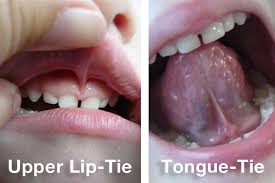
Posterior tongue tie appearance
Posterior and anterior tongue ties tightly connect the tongue to the lower jaw, but an anterior tie attaches much closer to the tip of the tongue. Anterior ties are much more restrictive and cause more problems in general.
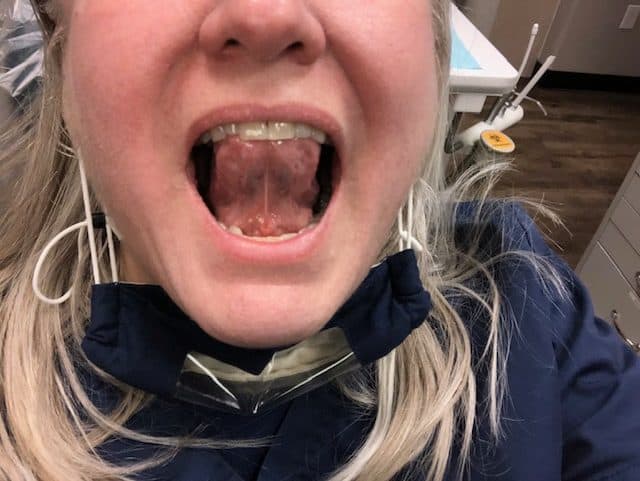
Anterior Tongue Tie
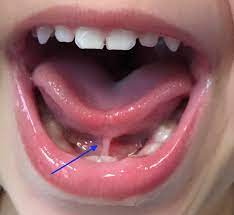
Upper Lip Tie
Lip ties connect the lip muscle too tightly to the upper and lower jaw structure. Upper lip ties retract the upper lips back and lead to underdevelopment of the upper jaw. Lower lip ties lead to reverse lower jaw position, deep bite and retrognathia. Lip ties should be released early in kids to allow forward jaw growth healthy airway and sleep.
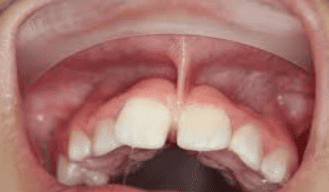
Upper lip tie
Lower Lip Tie
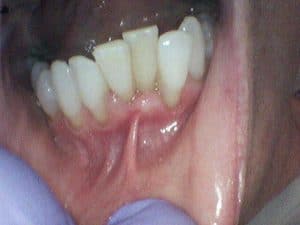
Buccal Ties (aka Cheek Tie)
Tongue and lip ties come in varying severities. In general anterior tongue ties are more restrictive and cause more problems than posterior tongue ties. Anterior tongue ties are more often associated with severe orthodontic problems, mouth breathing and possibly sleep apnea. Posterior tongue ties can have severe symptoms but usually have minor speech issues and less severe crooked teeth.
Upper and lower lip ties can both be serious. Upper lips on the average cause poor forward growth and more pediatric sleep issues and mouth breathing. Lower lip ties are associated with reverse lower jaw and retrognathia.
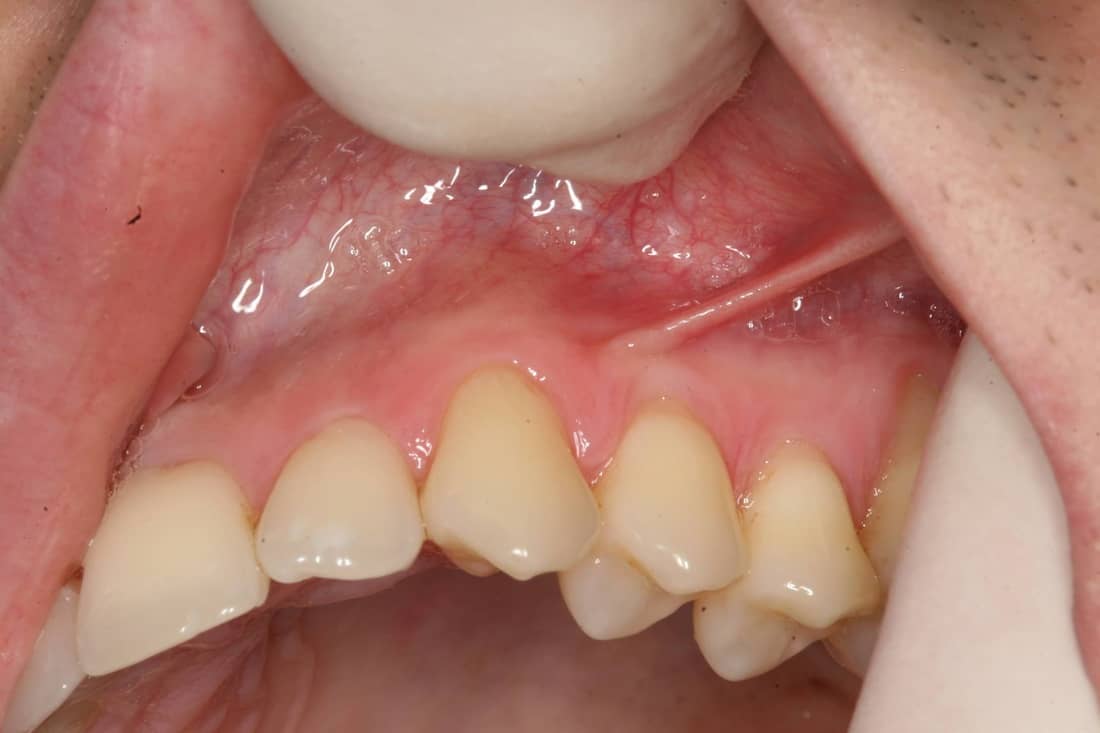
Laser Tongue Untie/Frenectomy Procedure:
Treatment for tongue tie may involve a simple procedure called a frenectomy. Frenectomies aka frenuloplasty involve releasing the frenulum to allow the tongue to move more freely. This procedure is usually performed by a dentist. Usually the release is done in the dentists office. Frenectomies are usually performed with a laser and hurt very little and cause minimal bleeding.
When is a Tongue Tie Release Needed?
Generally the recommendation for a release comes from a myofunctional therapist or dentist. Anyone who has airway resistance, sleep apnea and poor sleep need to be evaluated for a tongue untie procedure. If there are bite problems, teeth clenching and grinding issues usually a tongue release and myofunctional therapy are necessary. Many individuals who have tongue ties also have lip ties.
Tongue Tie Release and Orthodontics is usually needed
Releasing a tongue and lip tie alone is not going to automatically cause the tongue and lip muscles to start working perfectly. Our protocol is palatal expanders, tongue and lip tie releases and myofunctional therapy. We also incorporate posture correction and breathing exercises.
 703-712-1053
703-712-1053 